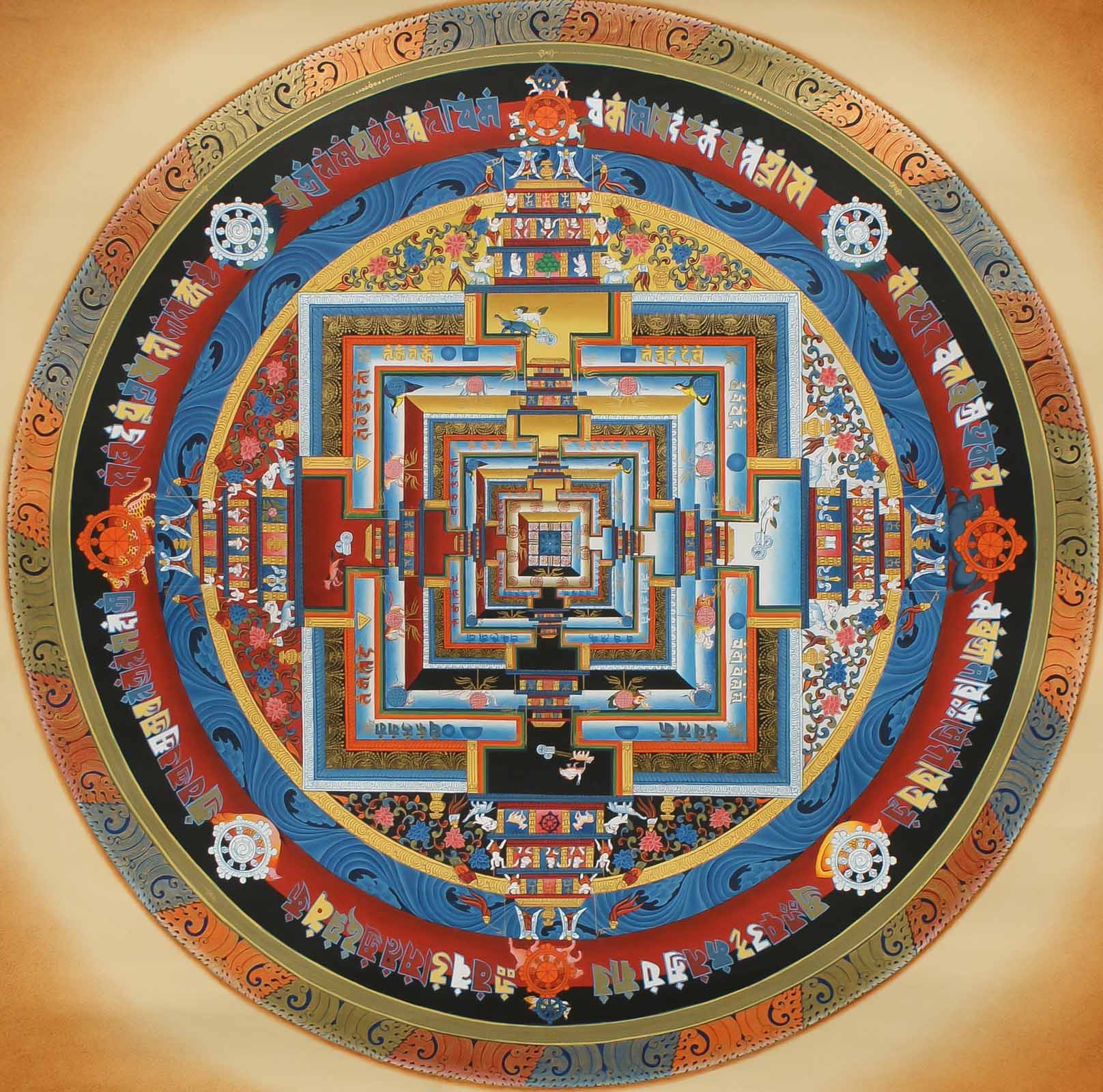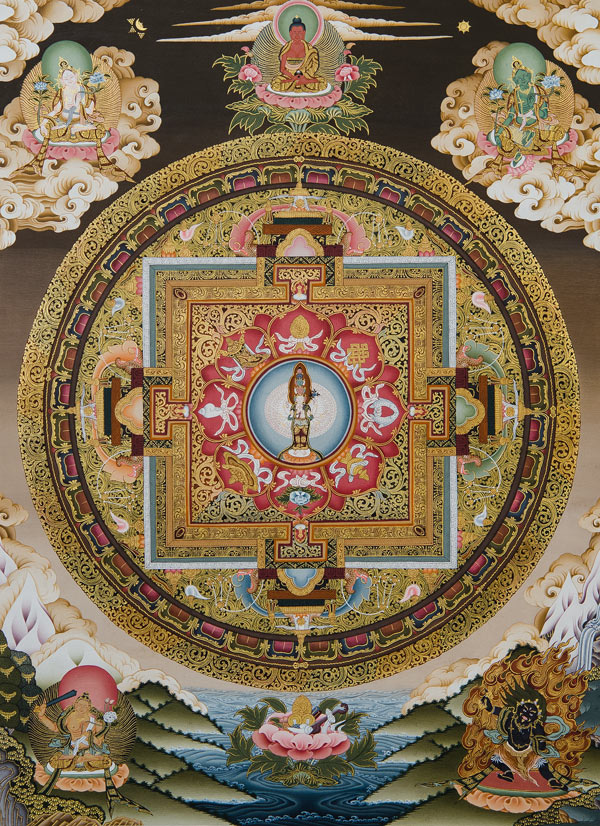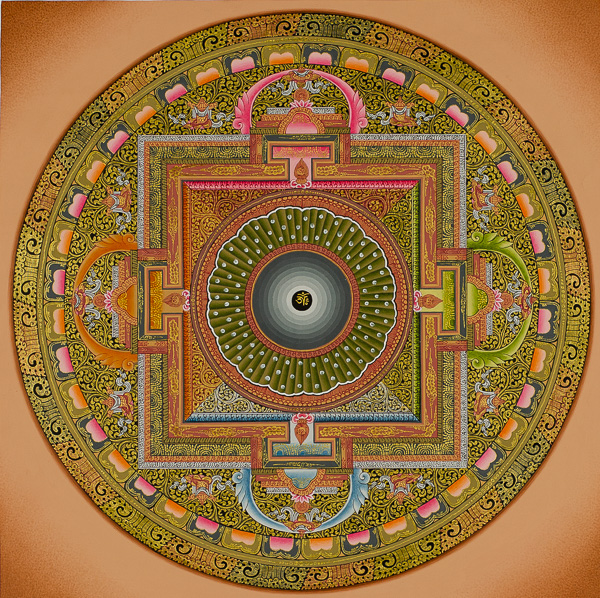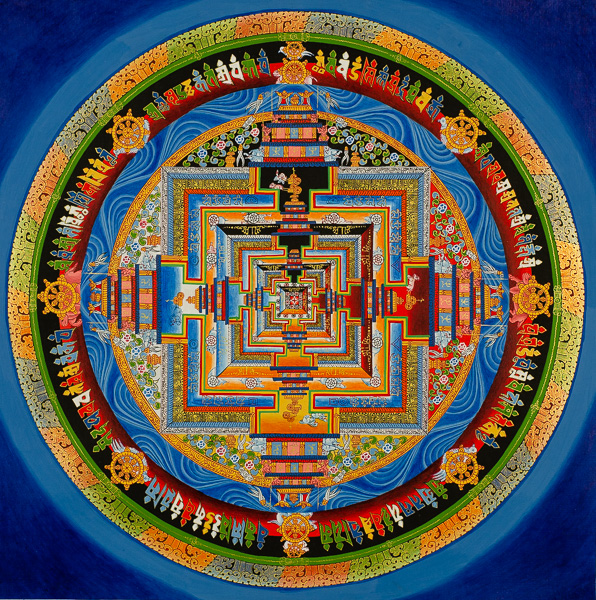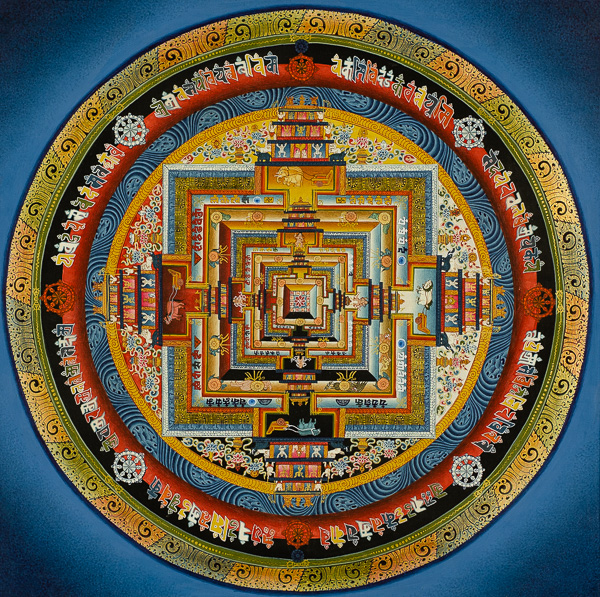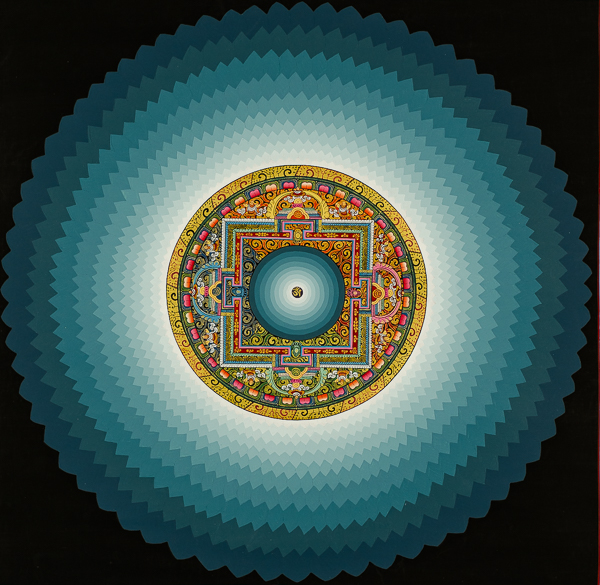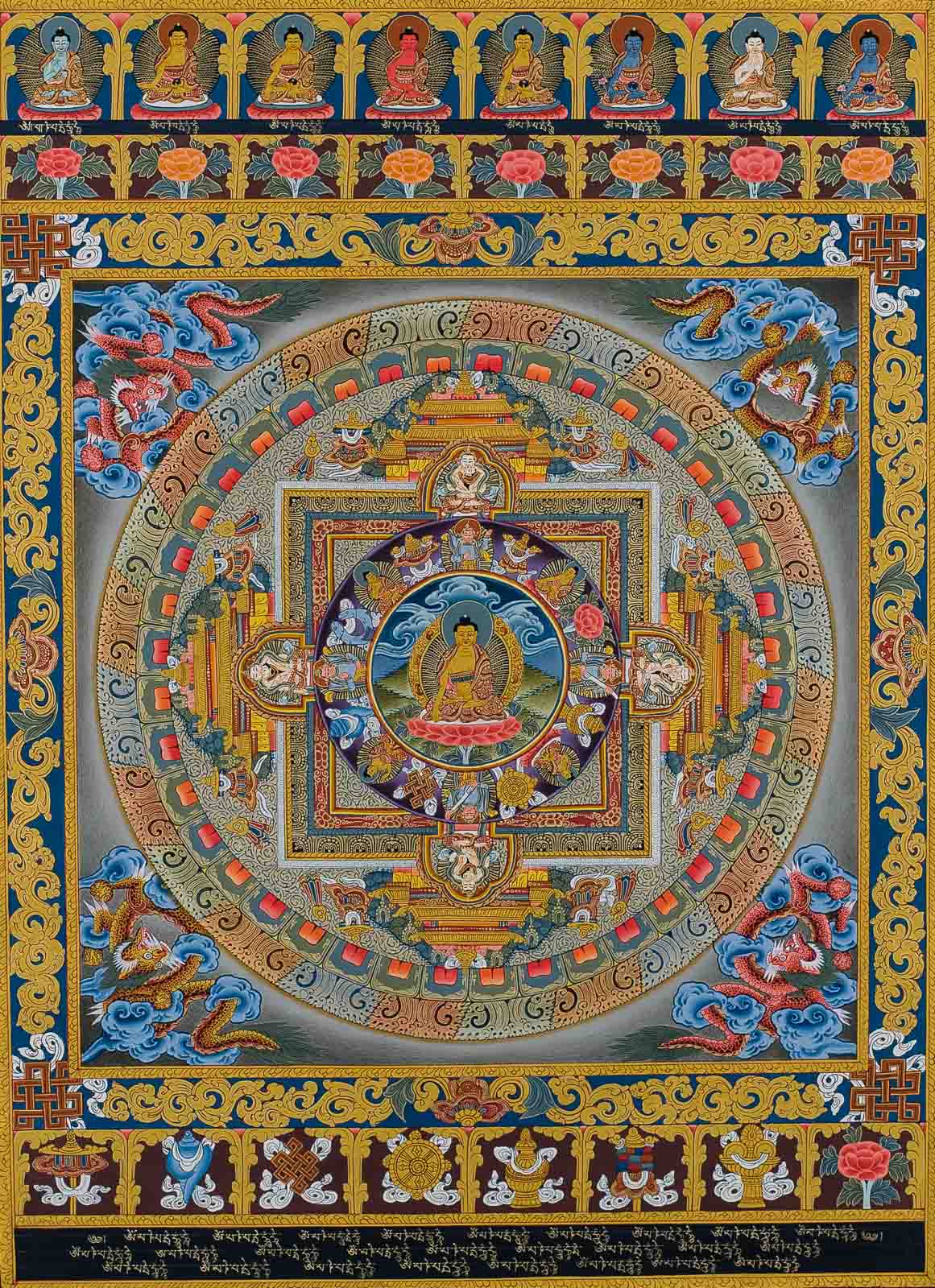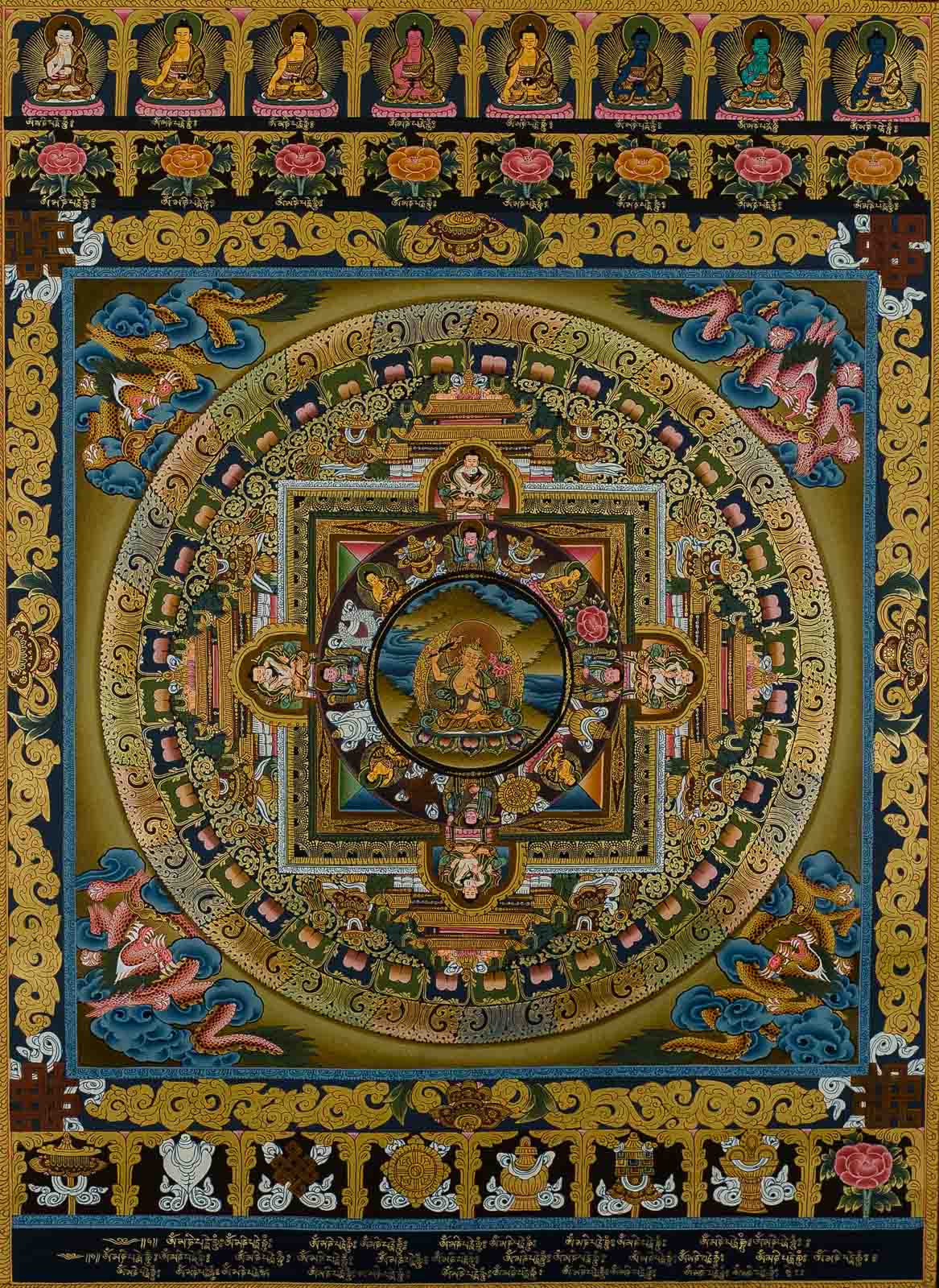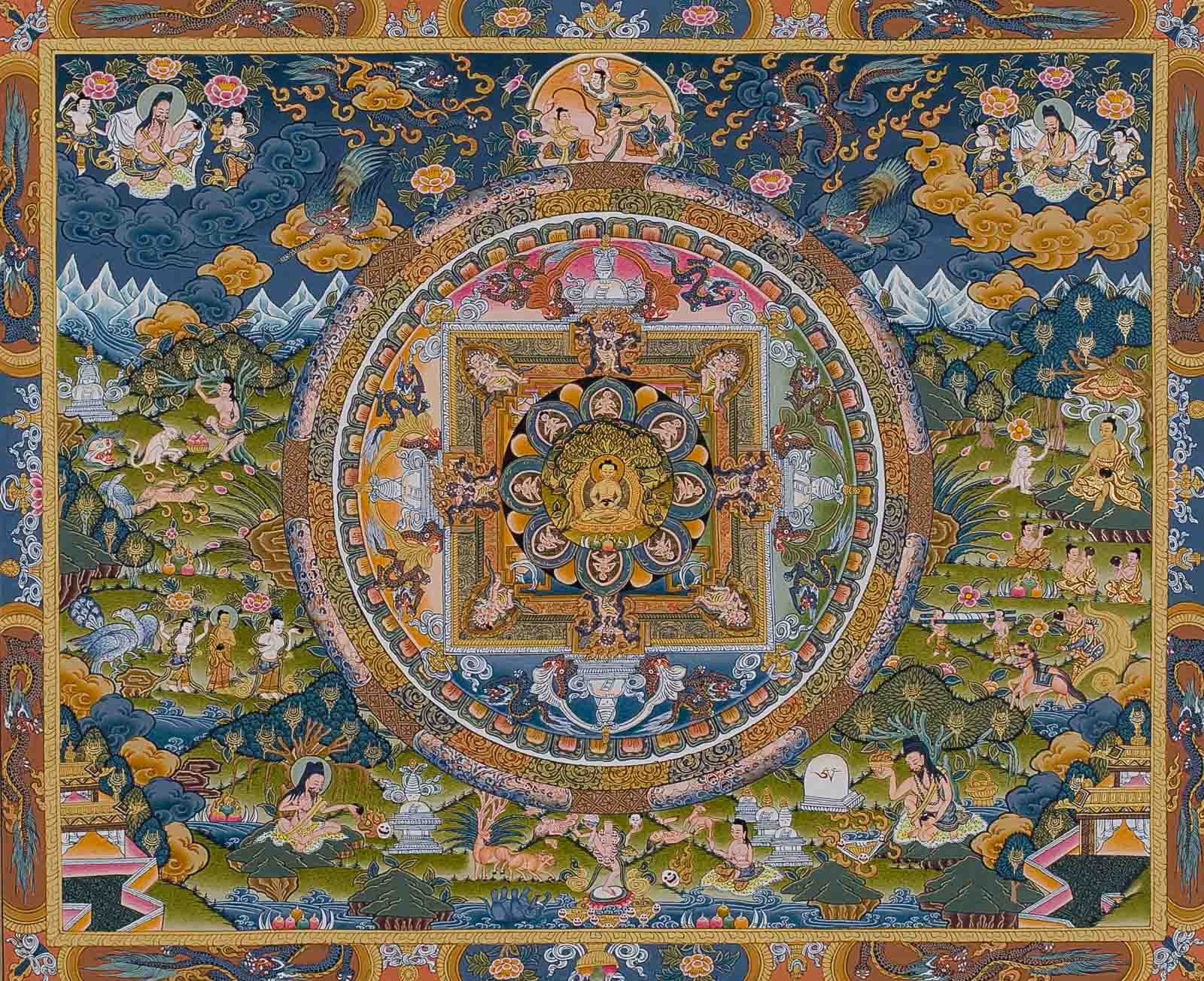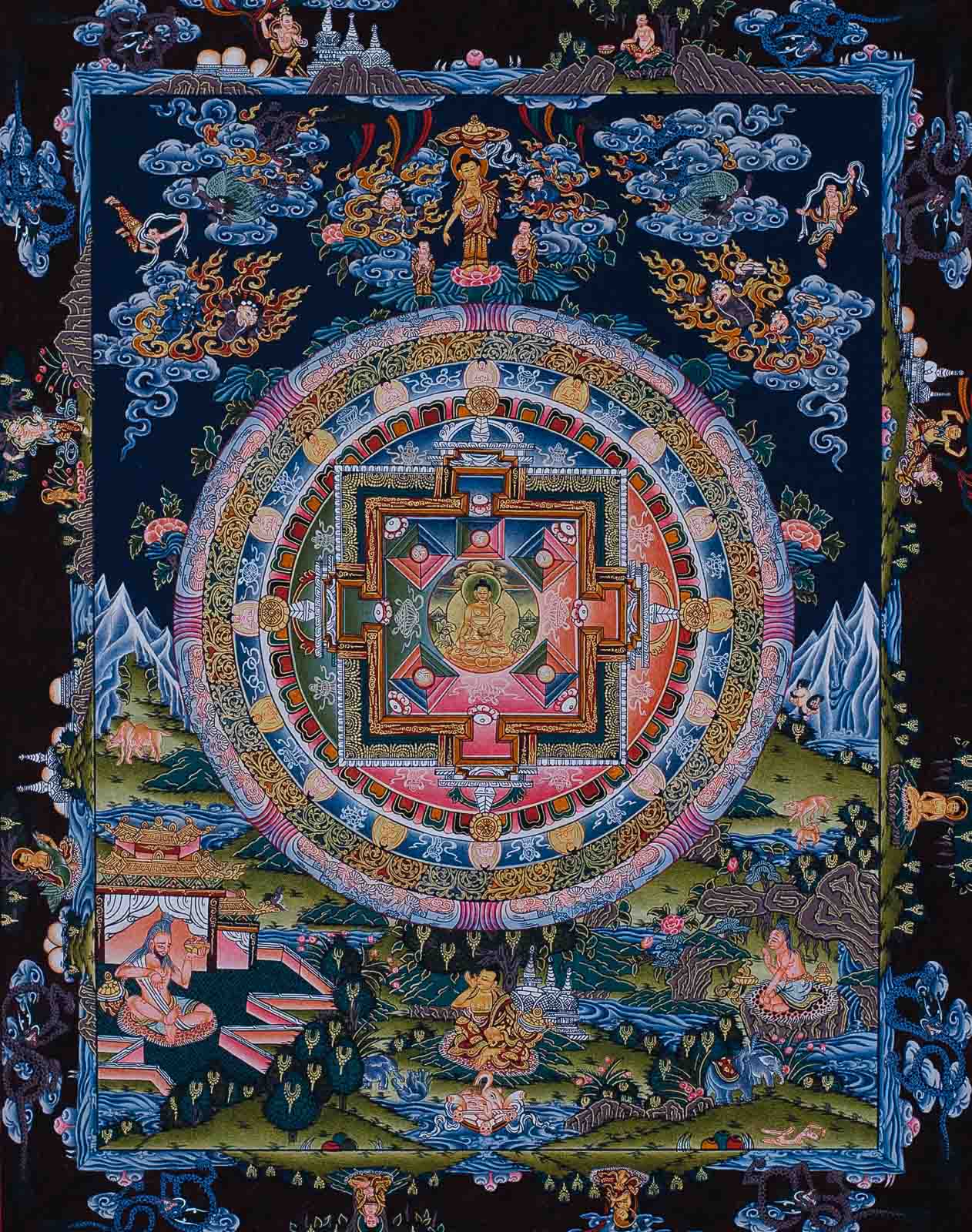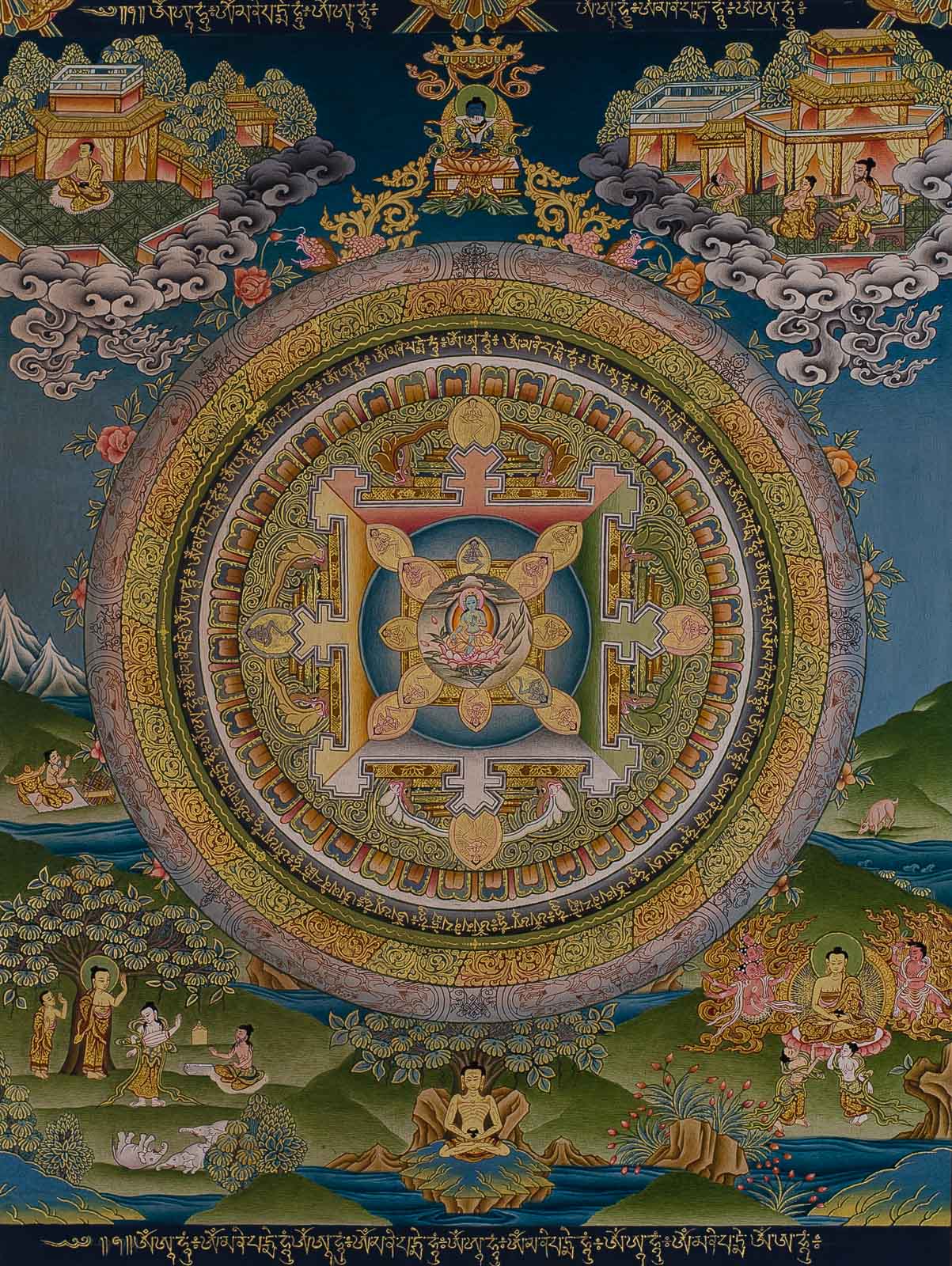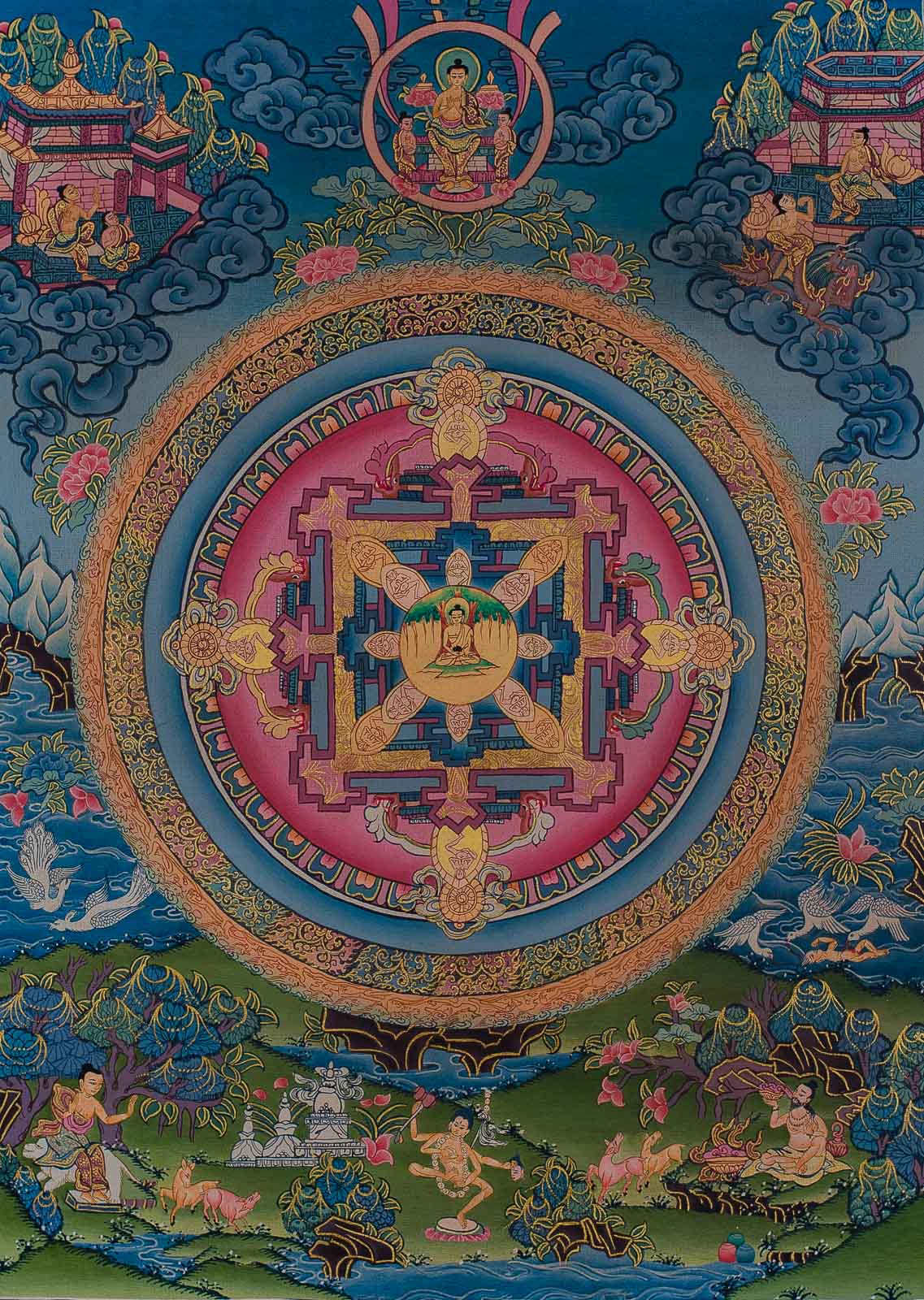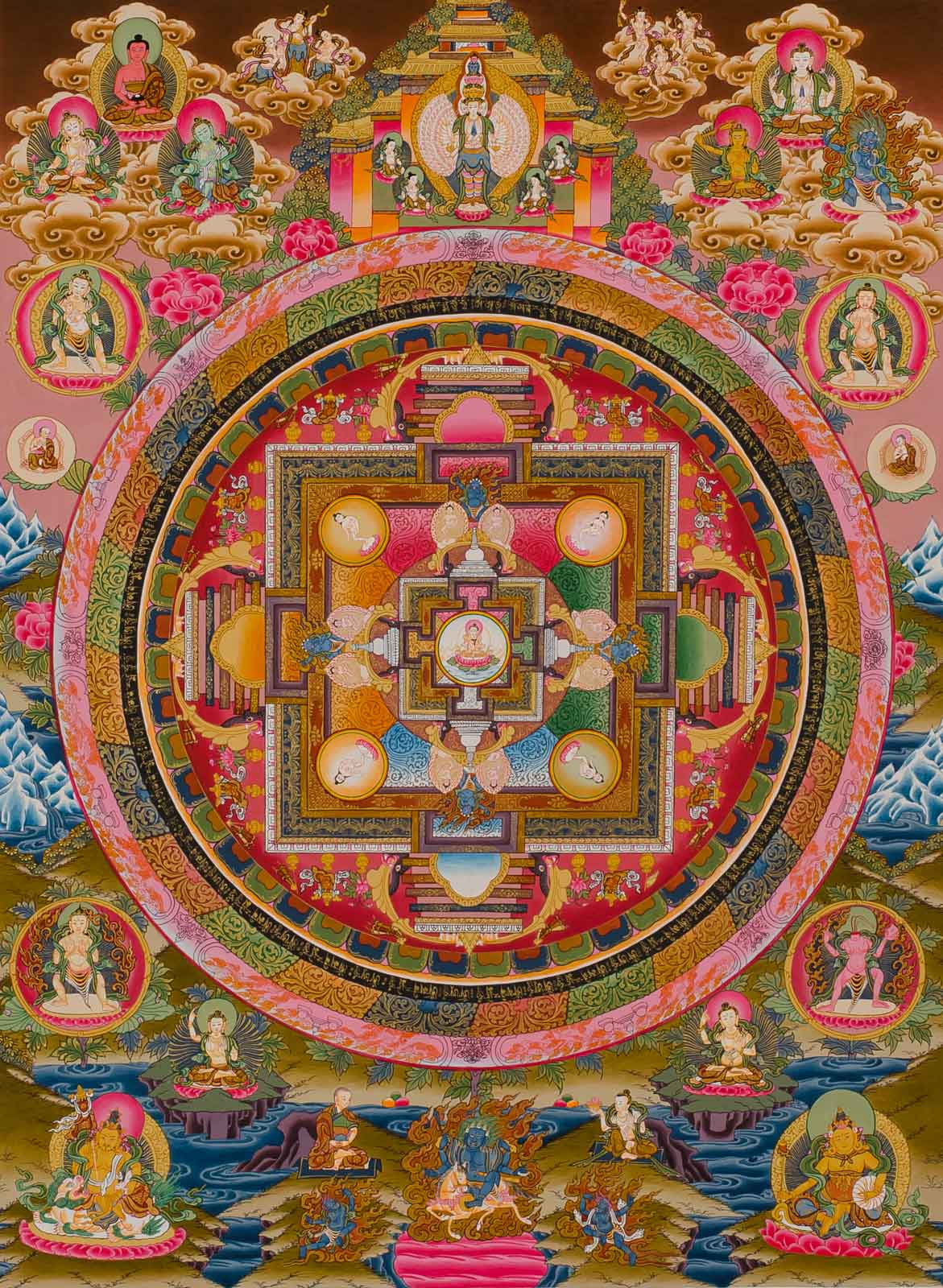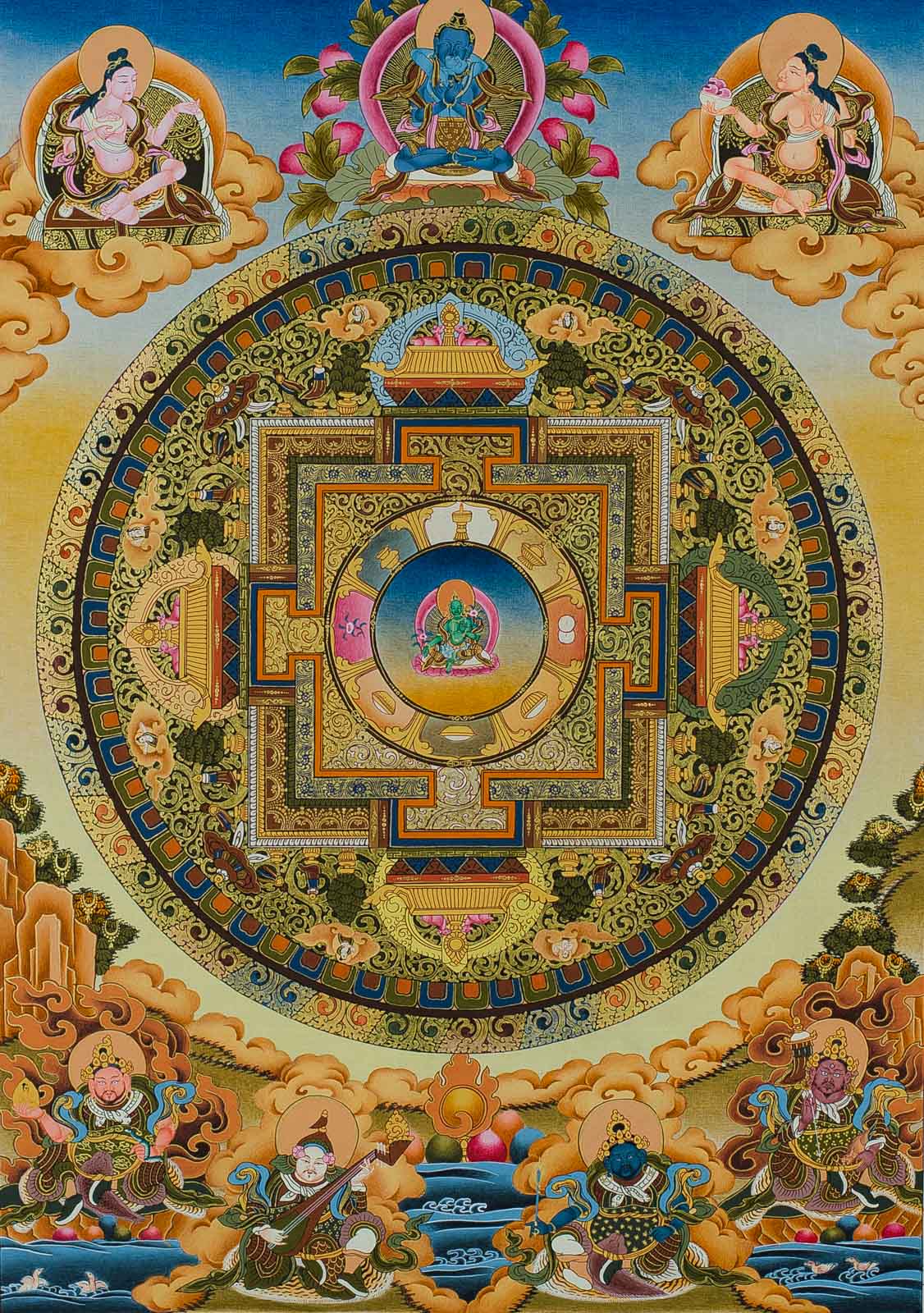Mandalas
tibetan. KYIL - KHOR
sanskrit. MANDA - essence or palace - LA - circle -
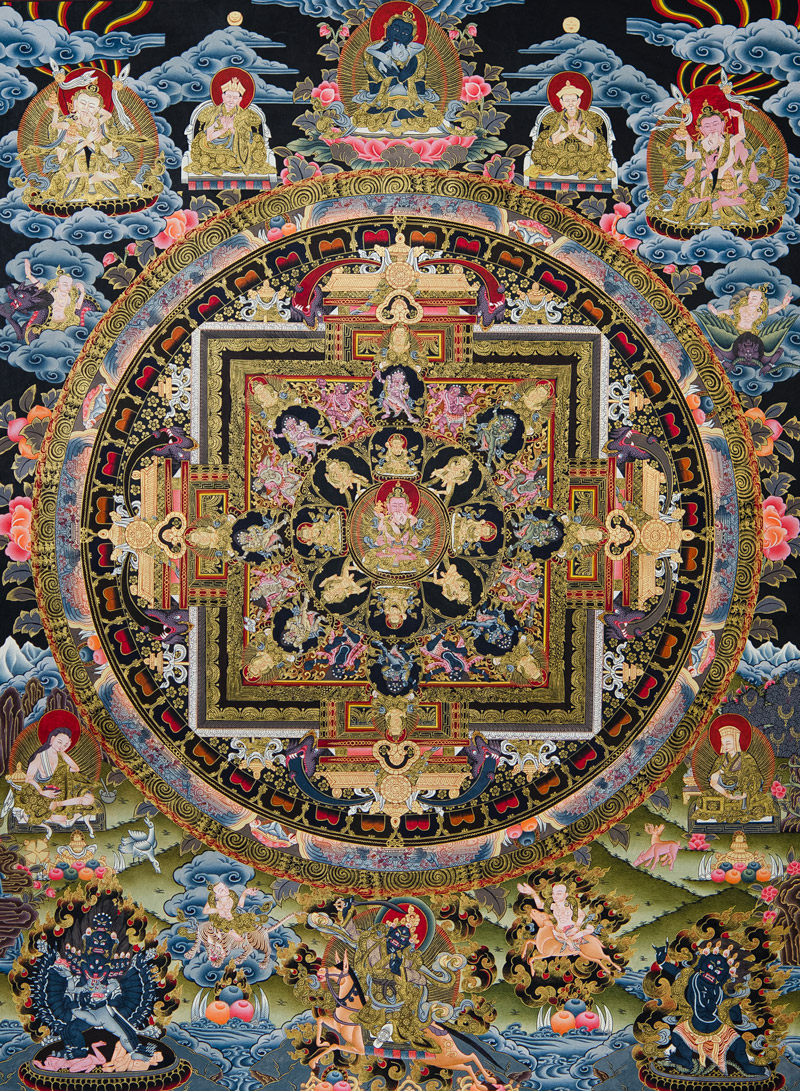
What is a Mandala ?
The term mandala has become a generic way of describing any circular geometric pattern, but it is important for us to understand where this word comes from and exactly what it represents. Originating in the Himalayan region, early in the 11th century, the word mandala takes its origins in Sanskrit and can be translated into “circle”. Sanskrit being synonymous with Hindu spiritual faith the word circle or what we call a mandala is in fact considered geometric representation of the Universe.
Early versions of the Mandala can be found in the Hindu faith where we would see geometric shapes representing deities. Buddhism took this concept one step further and today if you speak to someone in the Buddhist faith they will tell you that these paintings are in essence a 3 dimensional celestial palace with rooms that contain deities. Lets call this a mind map, a map to help us further our spiritual journey.
The Swiss analytical psychologist C G Jung, whose study of the unconscious led to a series of geometric shapes as drawings of "consciousness" and his familiarity with the Indian philosophical scripture led him to adopt the word mandala to describe these shapes. This is perhaps why the human psyche has always been fascinated by these complex, colorful images.
Our collection will focus almost entirely on Buddhist Mandalas, a Mandala by Buddhist standards will respect certain basic rules of composition and geometric proportion, although each painting you see is unique in its own way, we will try and cover some of these basic iconographic rules.
The Architecture of Enlightenment
A Mandala almost always consists of two elements : an outer circle combined with a square positioned inside. In most cases these circles or rings create a pure space protected from external impurities and negative forces.
The number of these circles can differ from one painting to another. In almost all mandalas the outermost circle will show flames which commonly represent protection. The innermost circle will be lotus petals which are the Buddhist symbol for purity. This imagery is typical of Mandalas and Thangkas in general, which is why almost all deities are seated on lotus thrones.
The square represents this symbolic palace or mind map, that we spoke about in the previous section. Any Mandala will always contain a principal deity, it can be painted or symbolized by a lotus flower in the case of the Kalachakra Mandala. This palace can contain any number of deities, but will always contain a principal deity which is always in the very center of the painting. Usually this deity is at the root of your practice or the deity with whom you have the strongest link.
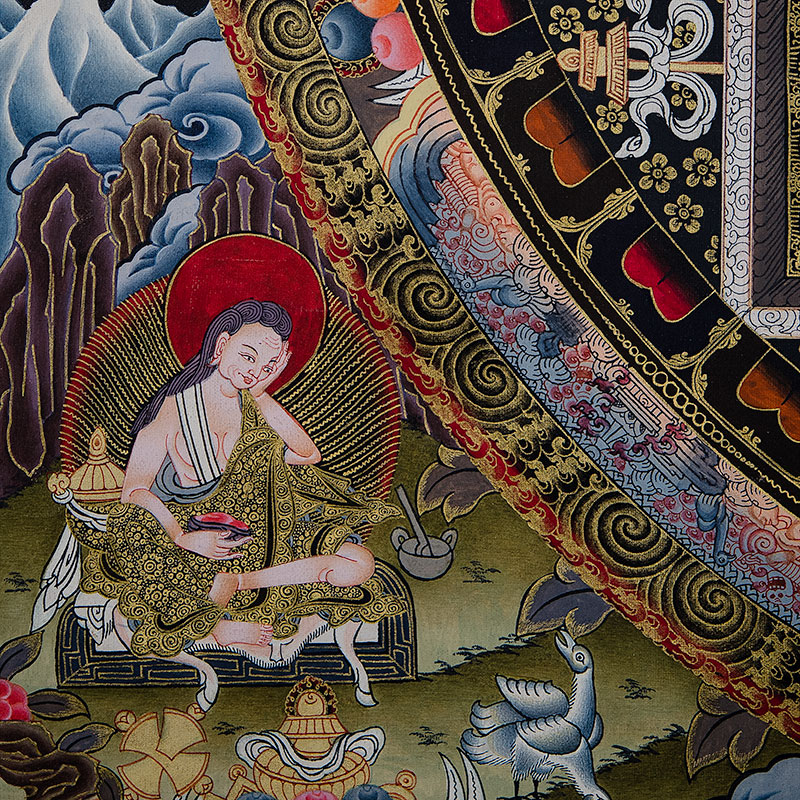
The Mandala acts as a guide to aid our meditative practice, it is through focus and meditation that we are able to access this celestial palace. On each side of the square in the four cardinal directions, there is an entrance to the Mandala. This is our access to this celestial world, a teacher or guru will help guide you through the palace until you can visualize each part.
In certain cases there are figures above and below the mandala, these are representations of the celestial world and our world.
In this gallery you will find traditional Mandalas. These can be called Meditation Mandalas and are used by practitioners as an object of focus. Focusing on these beautiful paintings creates a sense of peace and calm in the mind.
We have chosen a variety of unique Mandalas from our collection, with over 30 years of experience collecting these paintings, we hope that you will enjoy browsing through our selection. We are always ready to answer any question you may have.
- None
- Date
- Price
- All ()
- black ()
- black & gold ()
- blue ()
- brown ()
- green ()
- orange ()
- purple ()
- red ()
- red & black ()
- yellow ()
- All
- small
- medium
- large
- extra large
Kalachakra Mandala
Mandala, beige, large, Free Shipping, Cotton Canvas, Gouache, OptionalBeautiful high quality Kalachakra Mandala painted on a beige background....
Avalokiteshvara Mandala
Mandala, brown, medium, red, traditional, Cotton Canvas, Gold Leaf, Gouache, OptionalThis beautiful Mandala of Avalokiteshvara is a precious piece of art. Although we see many different styles of Mandalas this is the very best that this art-form has to offer, precise brushstrokes combined with exceptional color...
Lotus Mandala
Mandala, brown, modern, small, Cotton Canvas, Gold Leaf, Gouache, OptionalBeautiful Lotus Mandala painted on a beige brown background....
Kalachakra Mandala
Mandala, blue, small, Cotton Canvas, Gouache, OptionalBeautiful Kalachakra Mandala painted on a blue background. Done without gold leaf paint for those with a smaller budget....
Kalachakra Mandala
Mandala, blue, small, Cotton Canvas, Gold Leaf, Gouache, OptionalBeautiful Kalachakra Mandala painted on a blue background....
Lotus Mandala
Mandala, blue, small, Cotton Canvas, Gold Leaf, Gouache, OptionalBeautiful Lotus Mandala painted in tones of blue. This smaller sized Mandala is perfect for those looking for a high quality budget Thangka....
Shakyamuni Buddha Mandala
Mandala, blue, small, yellow, Cotton Canvas, Gold Leaf, Gouache, OptionalBeautiful Shakyamuni Mandala painted in tones of blue and green. Precise brush strokes and consistent line-work make this a high quality Thangka. This smaller sized Mandala is perfect for those looking for a high quality budget...
Manjushree Mandala
Mandala, blue, brown, small, Cotton Canvas, Gold Leaf, Gouache, OptionalBeautiful Manjushree Mandala painted in tones of blue and green. Precise brush strokes and consistent line-work make this a high quality Thangka. This smaller sized Mandala is perfect for those looking for a high quality budget...
Shakyamuni Buddha Mandala
Mandala, blue, green, small, Cotton Canvas, Gold Leaf, Gouache, OptionalBeautiful Shakyamuni Mandala painted in tones of blue and green. Precise brush strokes and consistent line-work make this a high quality Thangka. This smaller sized Mandala is perfect for those looking for a high quality budget...
Shakyamuni Buddha Mandala
Mandala, blue, small, Free Shipping, Cotton Canvas, Gold Leaf, Gouache, OptionalBeautiful Shakyamuni Mandala painted in tones of blue and green. Precise brush strokes and consistent line-work make this a high quality Thangka. This smaller sized Mandala is perfect for those looking for a high quality budget...
Green Tara Mandala
Mandala, blue, green, small, Cotton Canvas, Gold Leaf, Gouache, OptionalBeautiful Green Tara Mandala painted in tones of blue and green. Precise brush strokes and consistent line-work make this a high quality Thangka. This smaller sized Mandala is perfect for those looking for a high quality budget...
Shakyamuni Buddha Mandala
Mandala, blue, green, small, Free Shipping, Cotton Canvas, Gold Leaf, Gouache, OptionalBeautiful Shakyamuni Mandala painted in tones of blue and green. Precise brush strokes and consistent line-work make this a high quality Thangka. This smaller sized Mandala is perfect for those looking for a high quality budget...
Vajrasattva Mandala
Mandala, blue, large, red, Free Shipping, Cotton Canvas, Gold Leaf, Gouache, OptionalBeautiful Vajrasattva Mandala painted in tones of blues and red. Precise brush strokes and consistent line-work make this a high quality Thangka. Painted using traditional composition techniques and respecting the basics of...
Green Tara Mandala
Mandala, blue, brown, large, Cotton Canvas, Gold Leaf, Gouache, OptionalBeautiful Mandala of the Green Tara painted in tones of blue and beige. Precise brush strokes and consistent line-work make this a high quality Thangka. Painted using traditional composition techniques and respecting the basics of...

